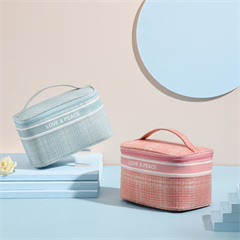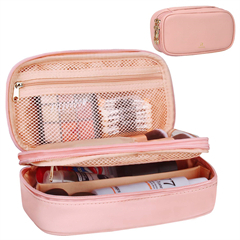The psychology of cosmetic bottle packaging is a fascinating area that explores how the design, colors, shapes, and overall presentation of the packaging influence consumer perceptions, emotions, and purchasing behavior. Here are some key psychological aspects related to cosmetic bottle packaging:
- Visual Appeal: The first thing that catches a consumer’s eye is the visual appeal of the packaging. Vibrant colors, attractive designs, and unique shapes can evoke positive emotions and make the product stand out on the shelves.
- Perceived Value: High-quality and aesthetically pleasing packaging can create a perception of value and quality in the consumer’s mind. Customers may assume that the product inside the luxurious or well-designed bottle is also of superior quality.
- Brand Recognition: Consistent packaging across product lines helps in brand recognition. A well-known logo or brand colors on the bottle can trigger brand association and influence purchasing decisions.
- Emotional Connection: Packaging can evoke emotions and create a connection with the consumer. For example, eco-friendly packaging might appeal to environmentally conscious customers, while elegant and sleek designs can evoke a sense of sophistication.
- Storytelling: Packaging can tell a story about the product, the brand, or its values. It can highlight the ingredients, the brand’s mission, or the product’s benefits, enticing customers who align with the narrative.
- Trust and Credibility: Thoughtfully designed packaging can instill trust in the product and the brand. Transparent and informative packaging can create a perception of honesty and credibility.
- Consumer Experience: User-friendly packaging enhances the overall consumer experience. Easy-to-use bottles, hygienic dispensers, or spill-proof designs can create a positive impression and lead to repeat purchases.
- Color Psychology: Colors play a significant role in influencing emotions and behavior. Different colors evoke different feelings; for example, blue can convey calmness, while red can suggest excitement or passion. Brands use color psychology to evoke desired emotional responses.
- Nostalgia and Familiarity: Packaging designs that tap into nostalgia or evoke a sense of familiarity can attract consumers who associate positive memories with certain shapes or colors.
- Scarcity and Limited Editions: Packaging that communicates limited availability or special editions can trigger a fear of missing out (FOMO) and encourage impulse buying.
- Sustainability and Ethics: Consumers are increasingly conscious of environmental and ethical concerns. Eco-friendly packaging can appeal to environmentally aware consumers and showcase the brand’s commitment to sustainability.
- Subconscious Triggers: Packaging can subtly influence purchasing decisions at a subconscious level. Elements like symmetry, balance, and font choice can impact perceived trustworthiness and attractiveness.
In conclusion, cosmetic bottle packaging is more than just a functional container; it is a powerful marketing tool that taps into human psychology to create positive associations, trigger emotions, and drive consumer behavior. Understanding the psychology behind packaging design can help brands create more compelling and successful cosmetic products.







